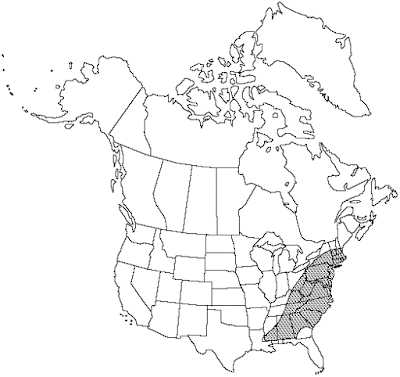Way back on August 13, I made a visit to Vinton County in southeastern Ohio, to visit my friend Ray Showman and his wife, Carol. The primary mission was to deliver a presentation to Carol's garden club, and that task was dealt with. But there was time for a field excursion into Vinton County's wildlands, and Ray and I hit some of the local hotspots.
One organism that I really wanted to revisit was a strange plant known as Climbing Fern, Lygodium palmatum. For as long as I can remember there has been a large station of this plant in a scruffy cutover woods not far outside of McArthur. Ray and I made our way there, and lo and behold - there was the fern. Vegetation succession has eliminated much of it - back when I first became acquainted with this spot the fern clambered over vast expanses, and suggested an out-of-control growth of Japanese Honeysuckle from afar. But the odd tangle of the odd fern persisted here and there.
In the photo above, we see the finely cleft fertile leaves of Climbing Fern, near the summit of the filamentous vining stems that scramble over other plants. Its support plant - at least one of them - is the noxious Japanese Honeysuckle, and supporting this beautiful fern is one of the better uses that I've seen for that invasive species.
This is what the ground below looked like. A vegetative tsunami of interesting hand-shaped leaves; the sterile foliage of the Climbing Fern. Their shape provides the plant's scientific name's specific epithet: palmatum (hand-like).
Here are both leaves together on an aerial stem. The narrowly lobed fertile leaves, which bear the indusia or spore cases, adorn the upper part of the twining stem. A few of the larger sterile leaves are below. All in all, a very showy climber well worthy of our attention and respect. It would seemingly make an excellent garden plant, but may be tough to grow, and it seems virtually unknown in the nursery trade.
Up until recently, Climbing Fern was a member of the strangely named Curly-grass family of ferns (Schizaeacaea. It has since been segregated into the Lygodiaceae). Only two species in these groups make it this far north: Climbing Fern (map), and the strange little Schizaea pusilla of the east coast and northeastern maritime regions. Ohio is on the edge of the Climbing Fern's range, and although it can be locally common, generally the fern occurs sparingly and locally in a handful of southeastern counties. The rest of the 35 or so species are tropical, and occur far to our south.




3 comments:
I just love ferns. I didn't know that there was a climbing fern. I hope to see it in the wild sometime. It is exciting to me to learn about this.
Isn't climbing fern in the family, Lygodiaceae?
My transgressions have been found out! Thanks Sarah. Yes, it has been placed in fairly recently carved out family as you note. I was looking at my old Gray's Manual, and the newer Gleason & Cronquist (1991) when I wrote the piece, and both still treated this fern as in the curly-grass family.
Post a Comment